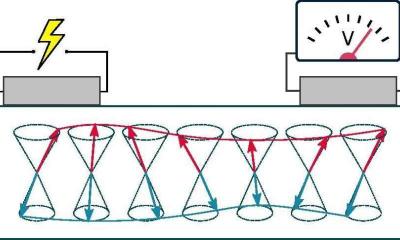Researchers achieve the quenching of antiferromagnets into high resistivity states via electrical or optical pulses
Researchers at the Czech Academy of Sciences, Charles University in Prague, ETH Zurich and other universities in Europe recently introduced a method to achieve the quenching of antiferromagnets into high resistivity states by applying either electrical or ultrashort optical pulses. This strategy could open interesting new avenues for the development of spintronic devices based on antiferromagnets.
Antiferromagnetism is a type of magnetism in which parallel but opposing spins occur spontaneously within a material. Antiferromagnets, materials that exhibit antiferromagnetism, have advantageous characteristics that make them particularly promising for fabricating spintronic devices. Due to their ultrafast nature, their insensitivity to external magnetic fields and their lack of magnetic stray fields, antiferromagnets could be particularly desirable for the development of spintronic devices. However, despite their advantages, most simple antiferromagnets have weak readout magnetoresistivity signals. Moreover, so far scientists have been unable to change the magnetic order of antiferromagnets using optical techniques, which could ultimately allow device engineers to exploit these materials' ultrafast nature.





